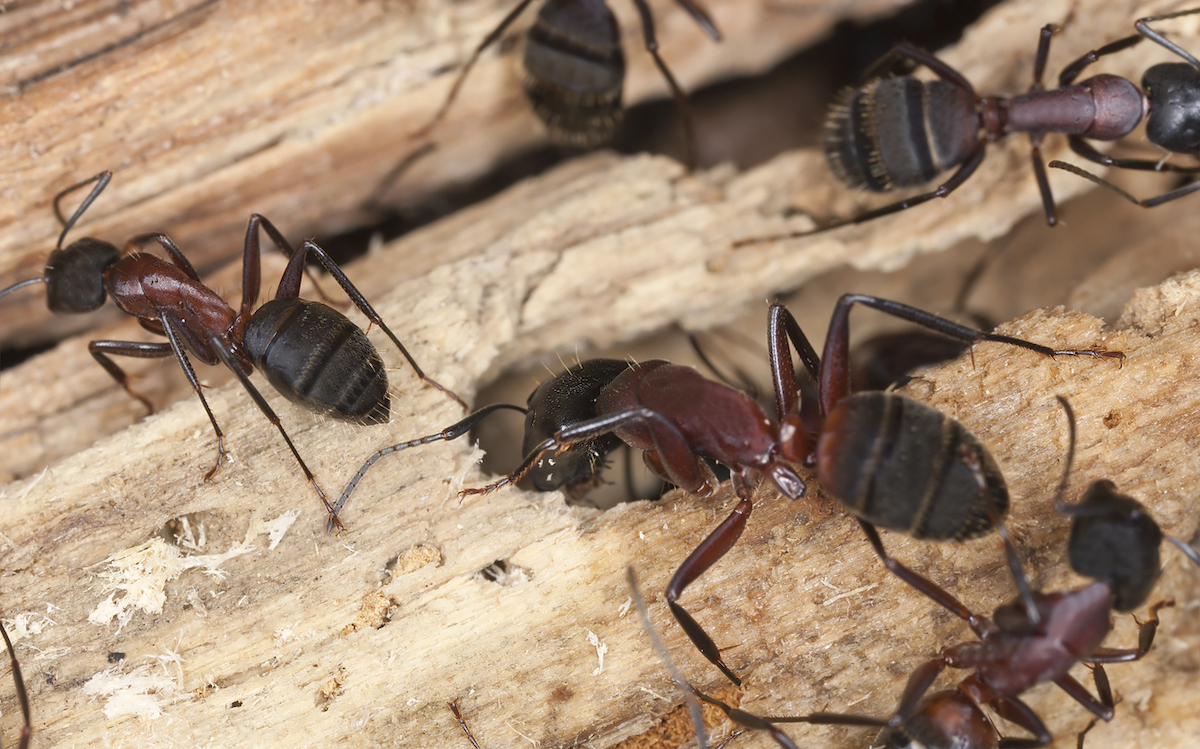

We may earn revenue from the products available on this page and participate in affiliate programs. Learn More ›
If you see a few big black ants crawling across your kitchen floors or counters, it’s time to act. Mature colonies can contain 3,000 or more carpenter ants, many of whom remain hidden in the nest. Carpenter ants form their nests in wood, meaning even a few can pose a threat to your home and nearby structures. Learning how to get rid of carpenter ants can help you prevent these pests from becoming a problem and keep them from coming back. We reached out to three pest professionals for their expert input on identifying and clearing up carpenter ant infestations.
What Are Carpenter Ants?
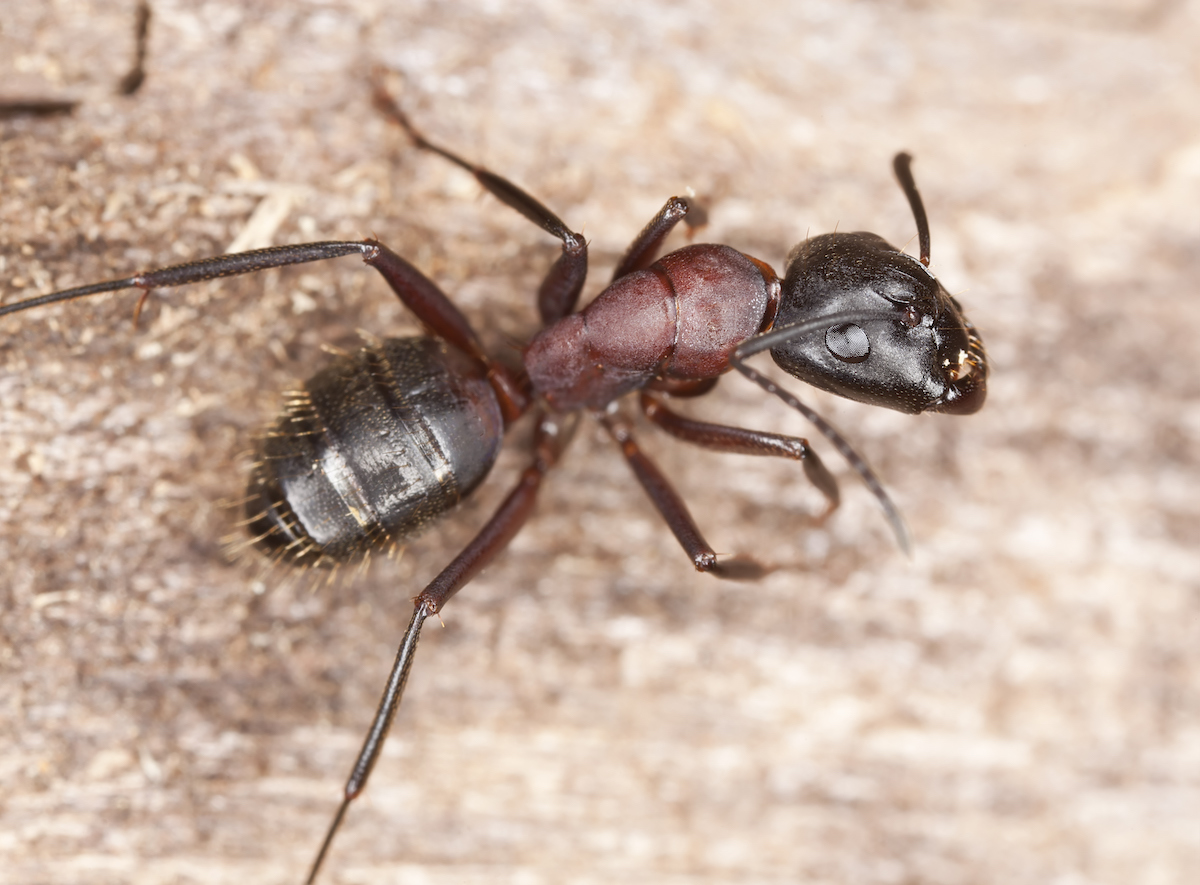
Carpenter ants (Camponotus spp.) are among the 700-plus species of ants in the U.S. However, unlike most other ant species, carpenter ants chew through wood to create tunnels for nesting. Don’t confuse carpenter ants with termites, though. Unlike termites, carpenter ants do not eat wood, but only chew through it to create their smooth tunnels. Nonetheless, despite the difference in the type of damage carpenter ants and termites cause, both can be destructive and can pose a threat to homes.
While the size of a carpenter ant can vary based on its specific job in the colony, they are among the largest species of ants. Some may be more than ½ inch long, and the queens measure close to ¾ inch in length. Different species of carpenter ants also vary in their coloring. Many are black, but some carpenter ants are red, brown, or black and red.
What Attracts Carpenter Ants?
“There are three things every living being needs: food, water, and shelter. And if your house can offer all three things, carpenter ants will want to stay and settle,” says Nicole Carpenter, president of Black Pest Prevention, which offers pest control in Charlotte, North Carolina. They especially prefer damp wood, which offers ideal conditions for building their nests.
According to Shannon Harlow-Ellis, associate certified entomologist (ACE) and technical services manager with Mosquito Joe in Virginia, “They favor areas such as damp basements or spots with water damage in your home because these environments provide the ideal conditions for nesting. Additionally, areas with high moisture levels, like poorly ventilated or leaky spaces, can also attract these ants.”
When it comes to food, Carpenter says that the ants aren’t very picky. She explains that they are “omnivorous and when nesting in the wooden structure of your home, they typically feed on meat scraps, pet food, jelly, syrup, honey, sugar, small dead and live insects, and other sweet and protein-containing items they can find in your home.”
Signs of Carpenter Ants in Homes
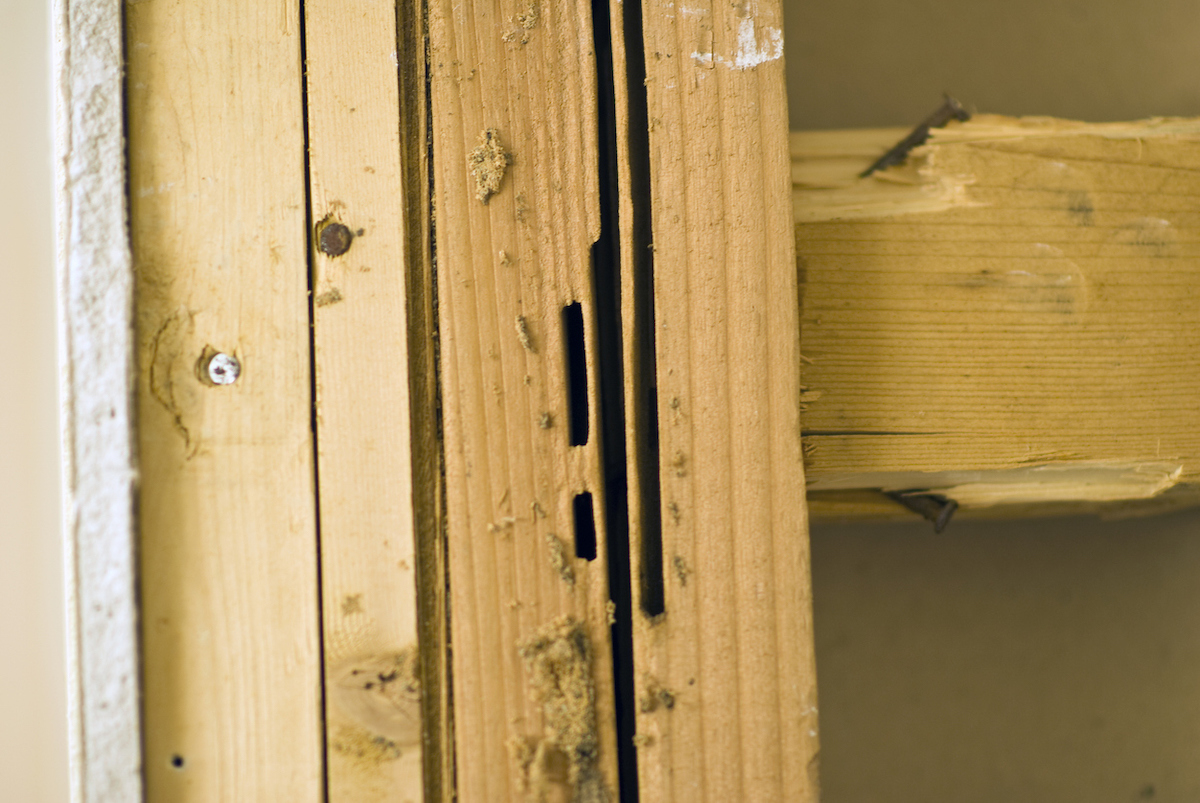
There are a few signs of carpenter ants to look for. Their large size can make spotting carpenter ants easier than some other ant species. Craig Sansig, ACE, PHE, service director with Viking Pest Control, which serves portions of New Jersey, Delaware, Pennsylvania, and Maryland, says “they are often encountered in the kitchen and bathrooms of homes as they search for food and water.” He adds that “ants may be seen trailing up the foundation, or upon siding,” Sometimes, you may also see flying carpenter ants. This is most likely during the spring and beginning of the summer when the adults are looking to mate, but it is possible at other times of the year.
If you see something that looks like sawdust, Sansig says that it can also be a sign that you’re dealing with a carpenter ant infestation. “This is called frass,” he says. He adds that when frass is inspected closely, it “will be irregular in shape, and may contain dead ants, and other insect pieces. This frass is being ejected from a gap or hole as they expand their home,” explains Sansig.
How to Get Rid of Carpenter Ants
You don’t need to rely on chemical pesticides to get rid of carpenter ants. There are effective natural options. To ensure that extermination is effective, be ready to stay on top of the problem, reapplying natural products as needed to kill all the ants and make sure they don’t come back.
Tools & Materials
Bobvila.com may earn a commission from purchases made through these links.
Project Overview
Working Time: 1 to 4 hours
Total Time: 1 to 4 hours
Skill Level: Intermediate
Estimated Cost: $20 to $150
STEP 1: Get rid of food sources that might be attracting the ants.

Before you start killing carpenter ants, think about why you might be finding ants in your kitchen and other rooms of the home in the first place. As mentioned above, carpenter ants are attracted to crumbs, meat scraps, pet food, and anything else they can find. Take some time to clean up the kitchen. Wipe up messes, sweep up crumbs, and make sure all the items in the pantry are sealed, ideally in airtight containers.
STEP 2: Set nontoxic bait traps.
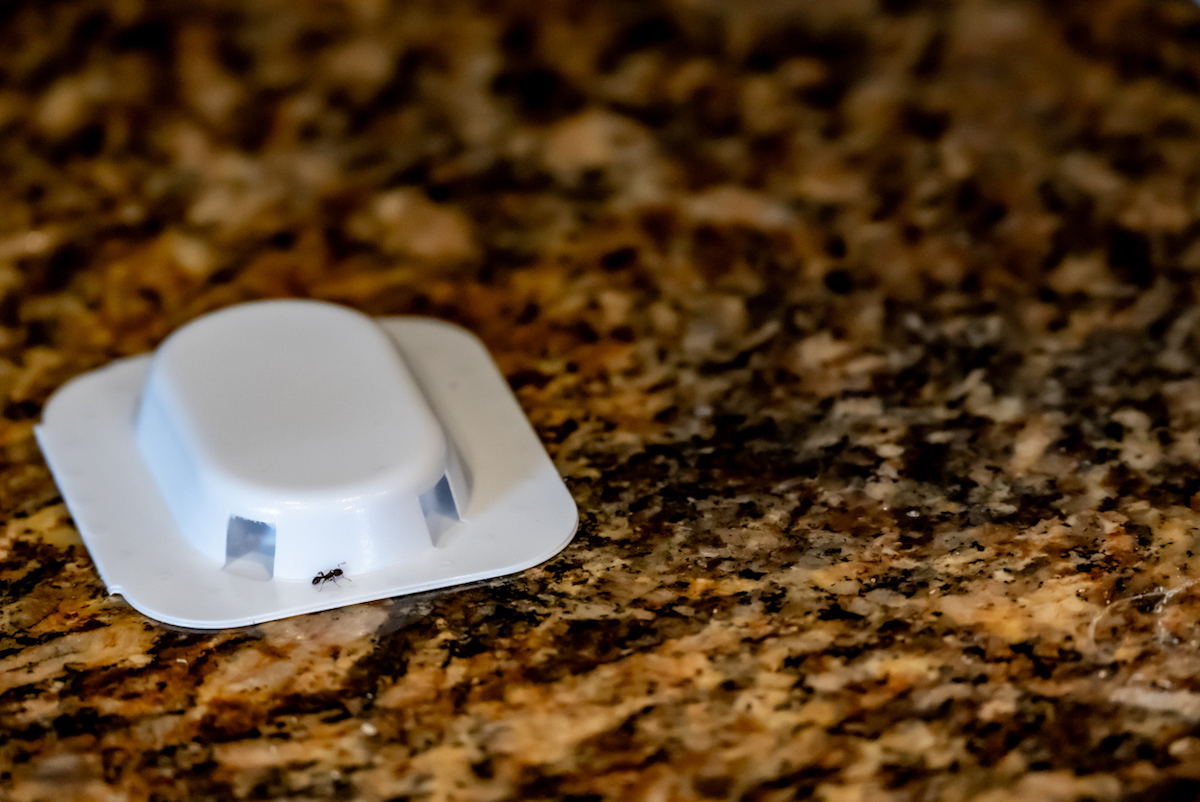
Setting a few carpenter ant traps can help you kill off many members of the colony. The ants scavenging in the kitchen, basement, and other rooms of the home will be lured into the traps seeking to bring food back to the other members of the colony. However, what they’ll bring back is a dose of poison that can eliminate many members all at once.
You can make your own bait traps using borax, an organic and nontoxic solution. Alternatively, purchase bait traps. Carpenter says, “I recommend using the ones that are nontoxic to non-target species, including pets and humans.”
STEP 3: Find and destroy the nest.
”The target for all ant treatments is the colony, and not the foraging workers,” says Sansig. Because only a few members of the colony will be out of the nest, your best bet for carpenter ant extermination is to find the nest and destroy it. Sansig recommends setting out some sweet bait and waiting until some carpenter ants find it to take it back to their nest. He says you should follow them—but not “too closely though, as CO2 from your breath may be detected by the ant and cause the ant to stop moving, fearing predation.”
You likely won’t be able to see the actual nest, since it will be within tunnels in the wood, but once you know the general area, you can get to work. Use a drill to make holes around the entire area where you think the nest is, then apply boric acid to the area using a bulb duster. Come back every few days to apply more boric acid until you’re confident the ants are all gone.
STEP 4: Spread diatomaceous earth.
If you’re dealing with carpenter ants in the house, Harlow-Ellis says, “Food-grade diatomaceous earth can be used as a nontoxic barrier. It works mechanically by piercing the exoskeletons of ants as they crawl over it, leading to dehydration.” She recommends spreading diatomaceous earth “along ant paths, near entry points, and where you suspect nests may be located.”
Carpenter adds, “Applying [diatomaceous earth] with a duster allows you to create a fine mist of dust instead of piles. Avoid creating piles of diatomaceous earth as insects tend to bypass it.” If you locate the nest, you can also blow diatomaceous earth in through voids in the wood as a carpenter ant treatment to kill a greater number of the pests. “Diatomaceous earth is only effective when it’s completely dry,” Carpenter says, so it is best suited for treating ants indoors.
STEP 5: Treat the outside of the home.
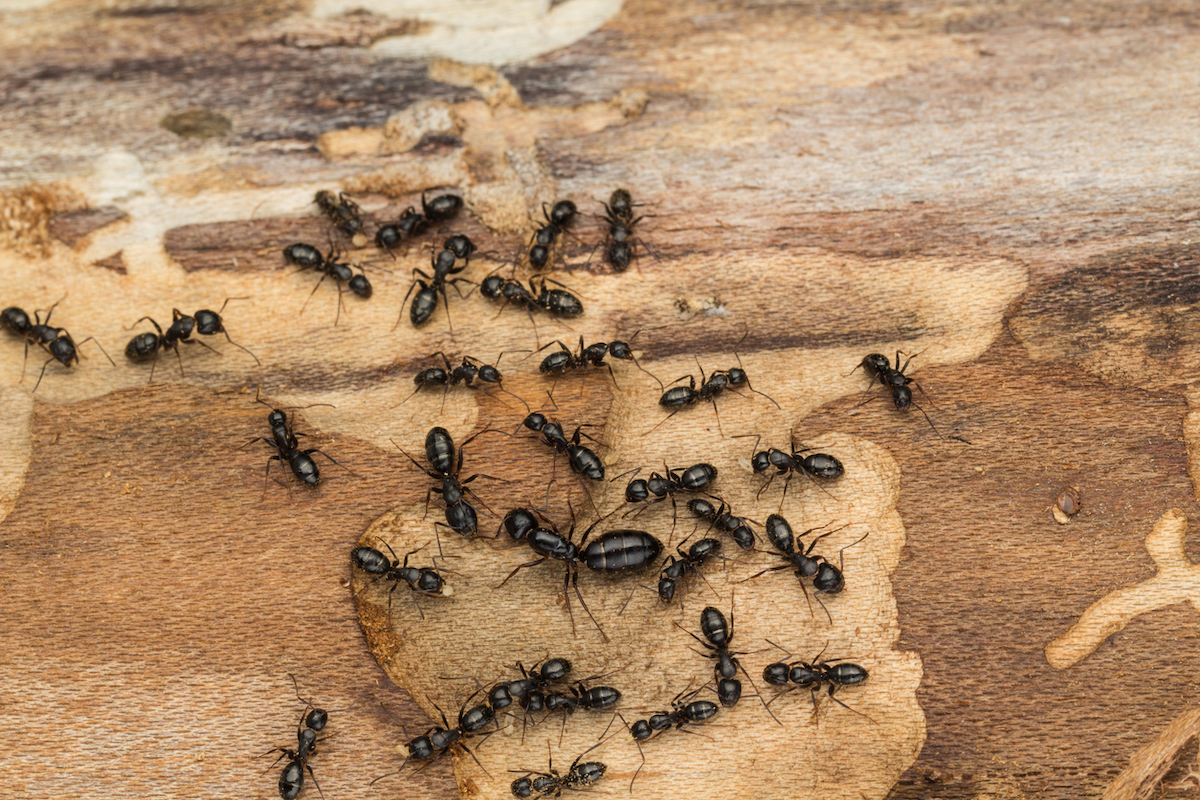
To prevent the pests from coming back into the house, you’ll also want to apply a treatment for carpenter ants to the outside perimeter. According to Carpenter, mixing borax with sugar works as an effective and environmentally conscious carpenter ant killer. “Simply mix equal parts of borax and sugar and sprinkle this mixture lavishly around the perimeter of your home, focusing on areas where ants are likely to enter, such as near doors, windows, and foundation cracks,” she explains.
In addition to applying the borax mixture around the home’s entry points, you should address areas of high moisture that the ants may be drawn to. University of Minnesota Extension recommends replacing any wood that has been damaged by water, storing firewood and lumber as far away from the home as possible, trimming back tree branches that hang over the roof or powerlines, and getting rid of any shrub or tree stumps.
Final Thoughts
If carpenter ants have invaded your home, you’ll want to go to work quickly to get rid of them. These ants can cause serious damage by chewing through wood in your home as they work to form tunnels for nesting. Start by trying the tips and suggestions above, such as setting bait carpenter ant traps, sprinkling diatomaceous earth, destroying the nest, and removing food sources. If you still aren’t successful in curtailing the problem, consider reaching out to a professional pest control company for further assistance.
